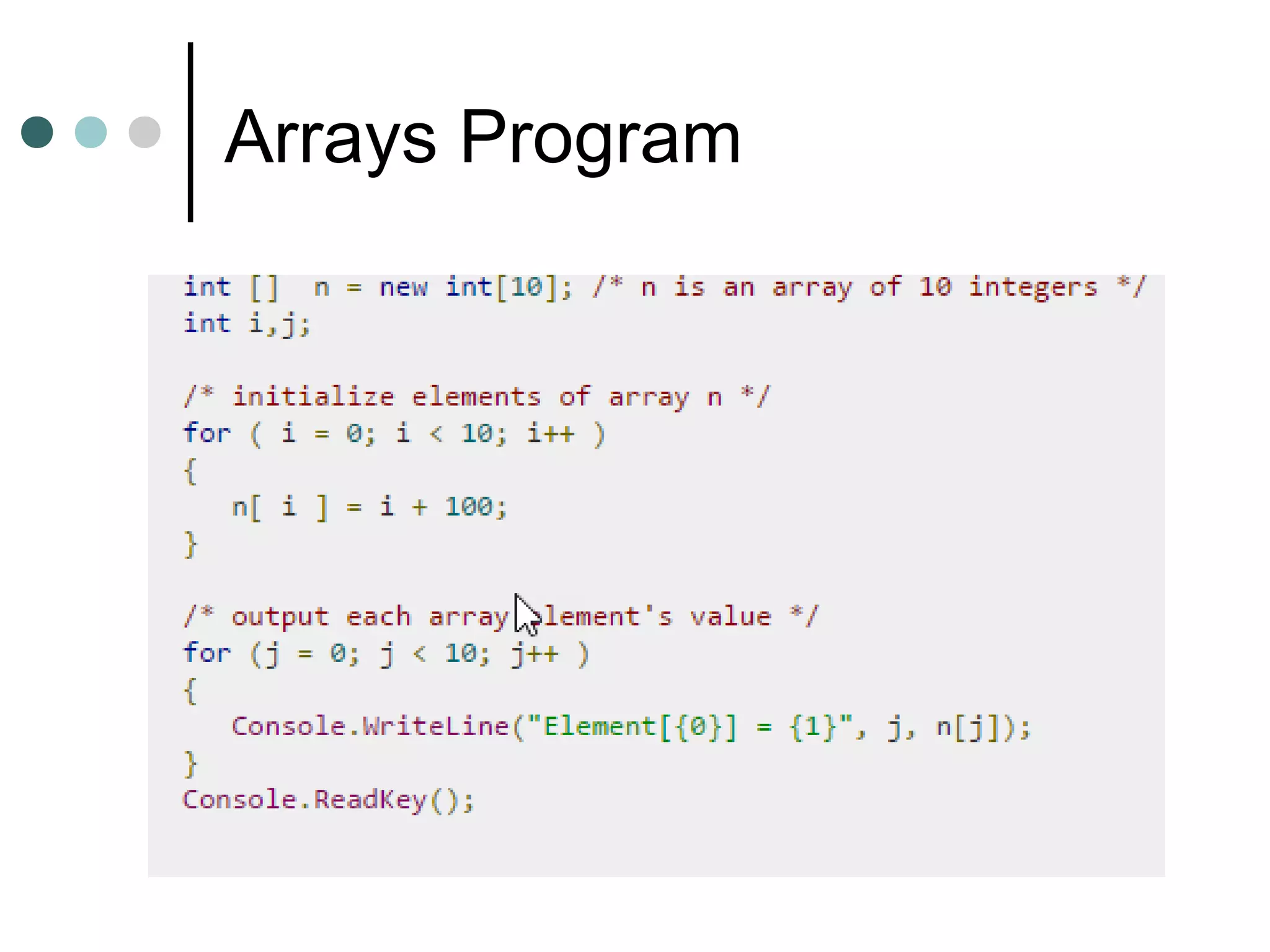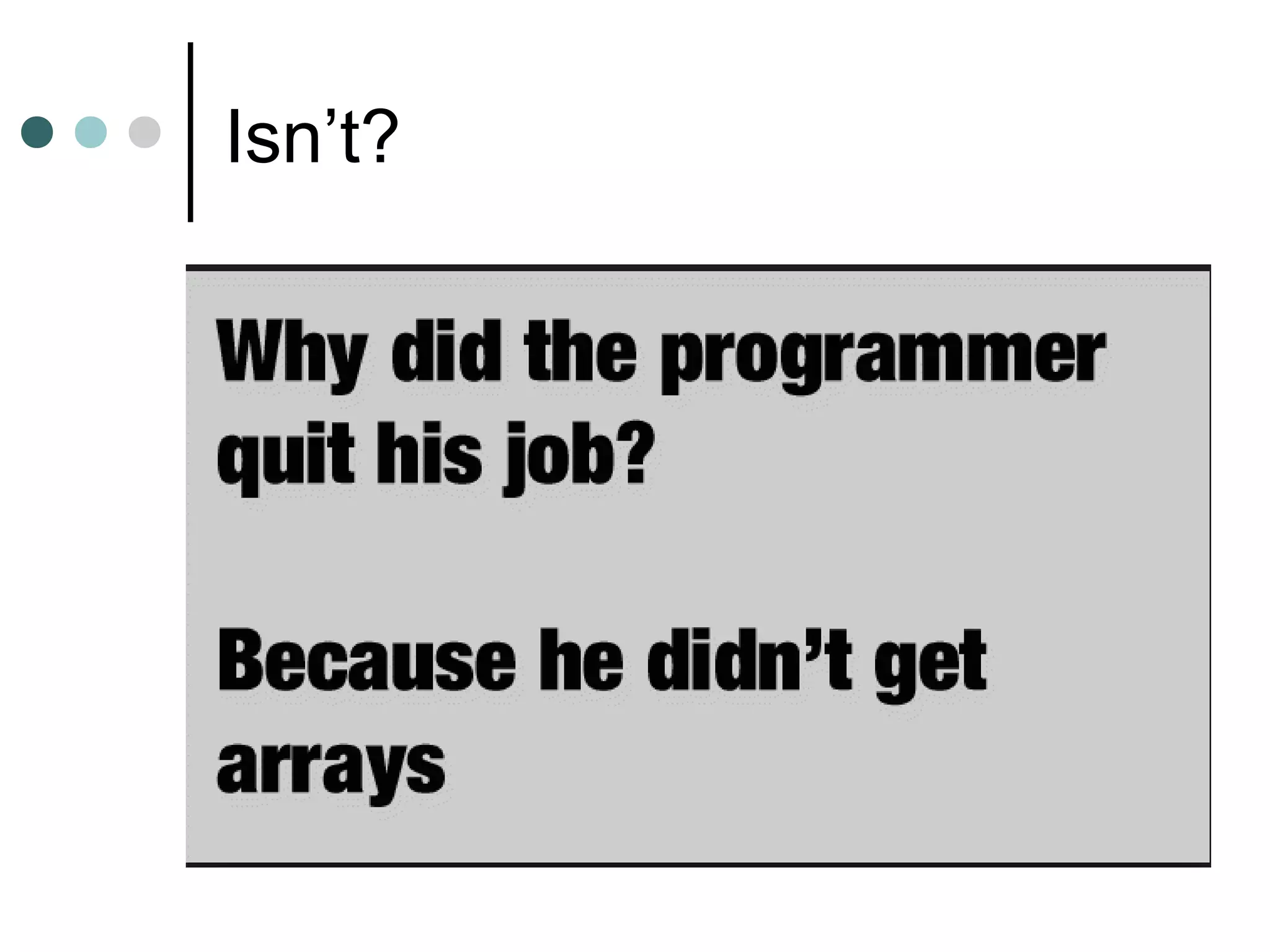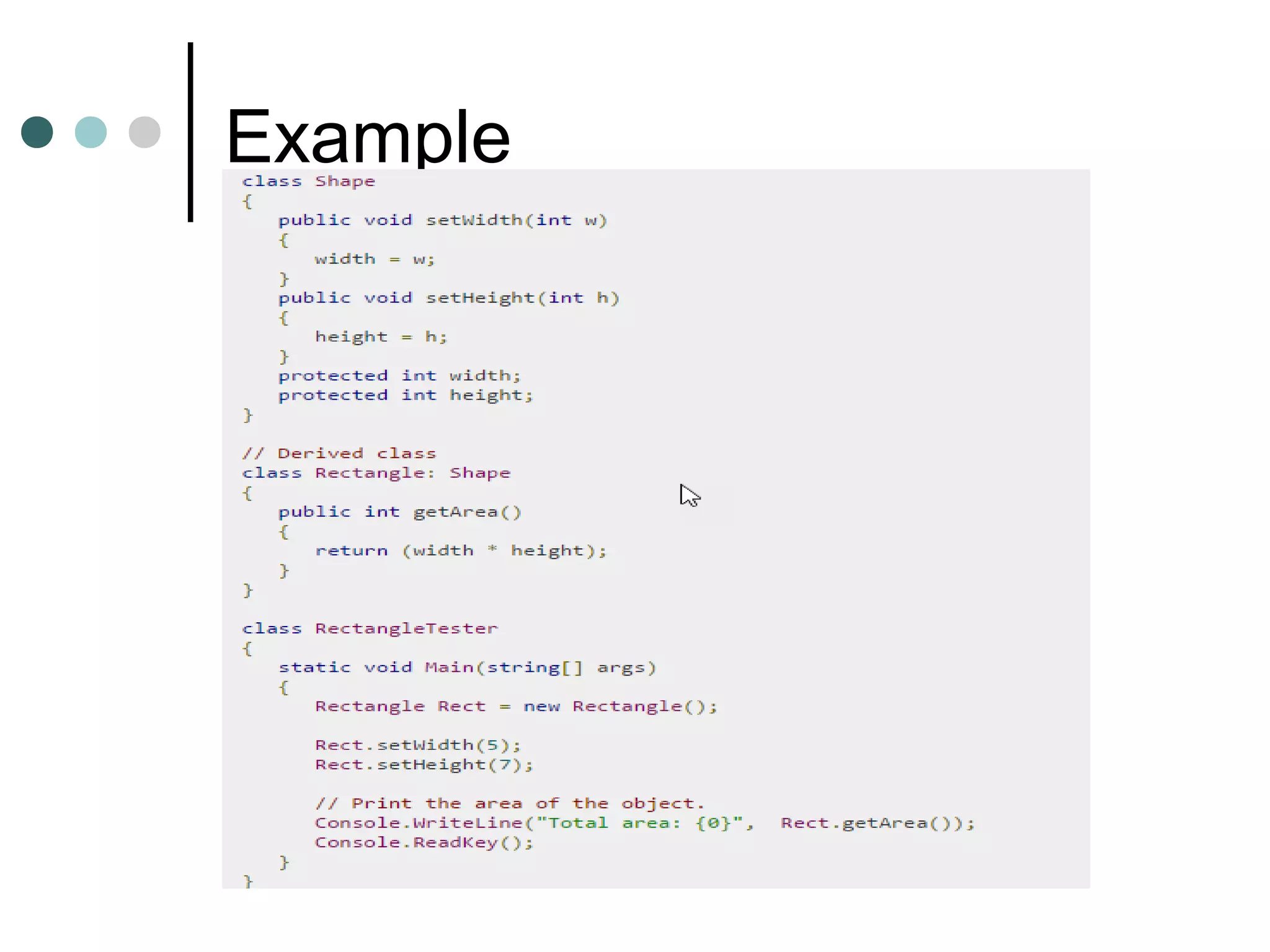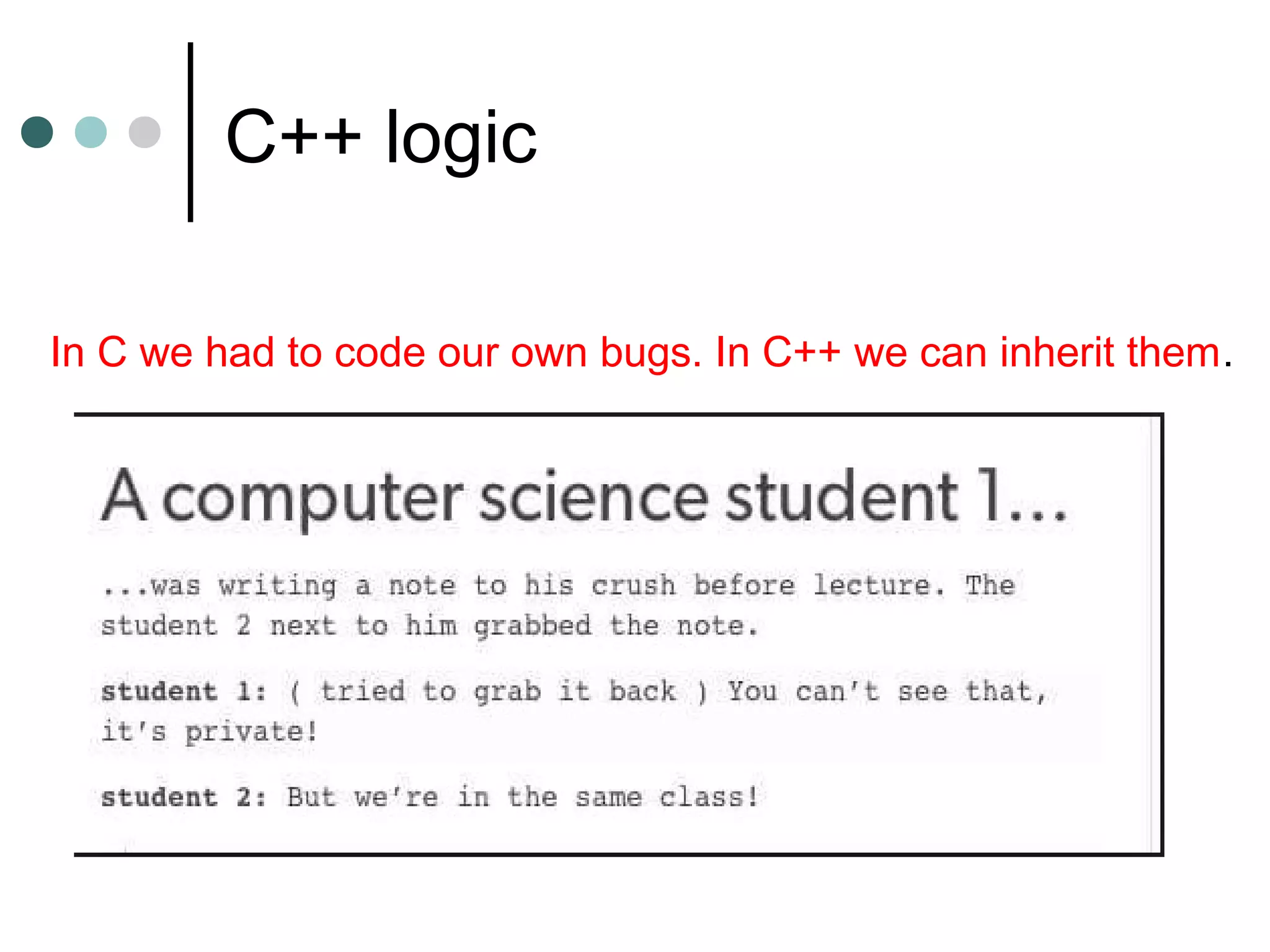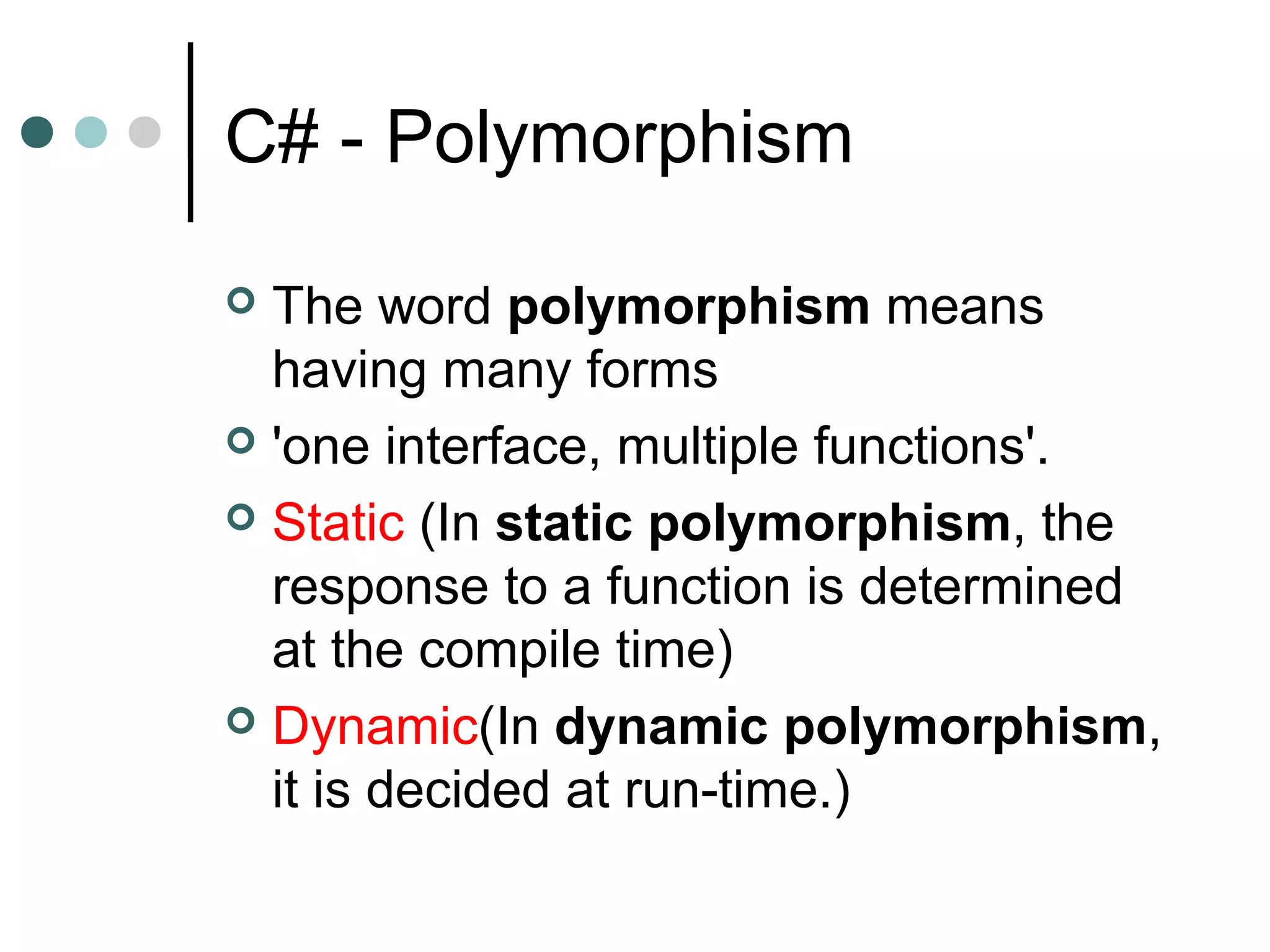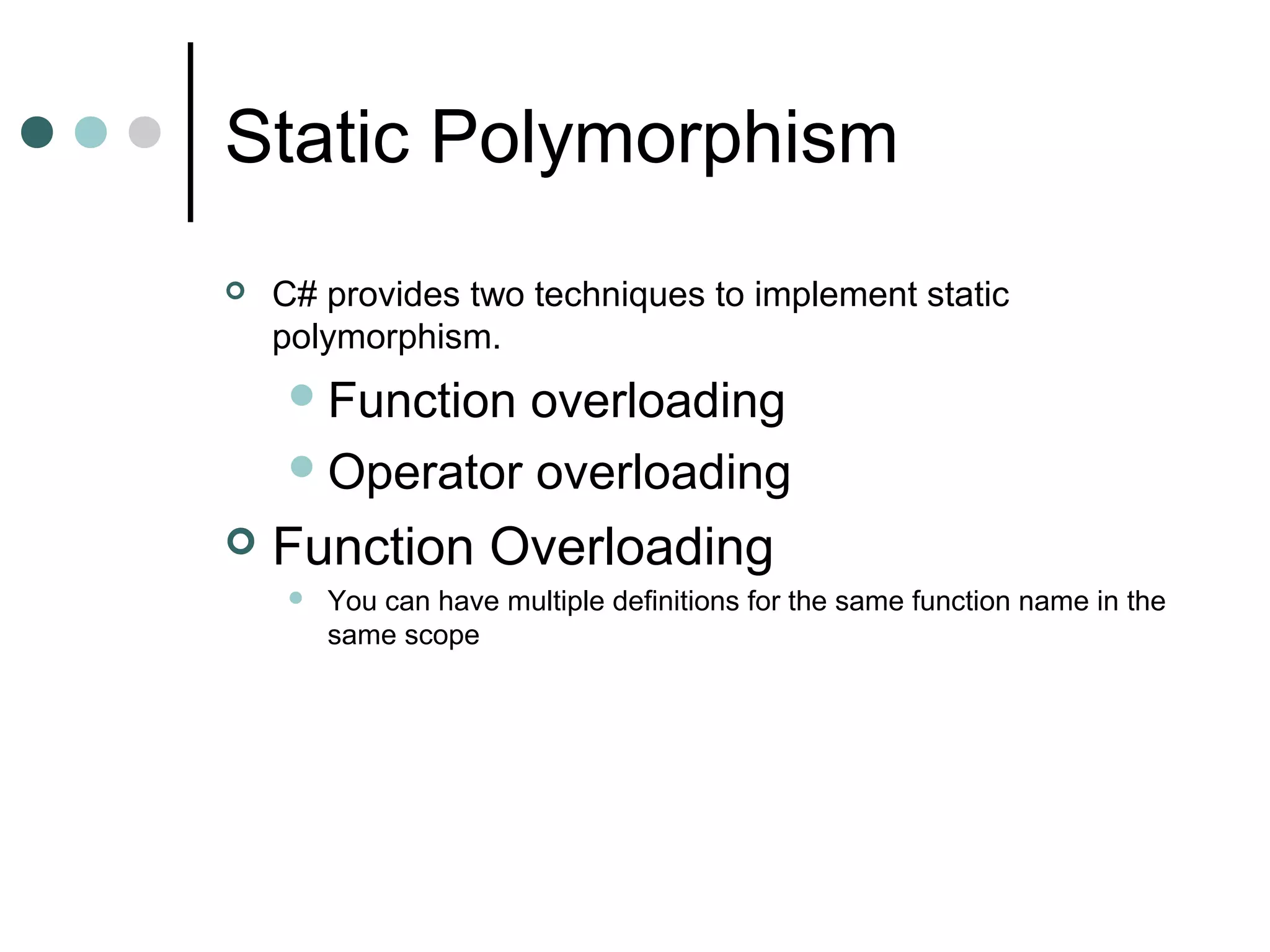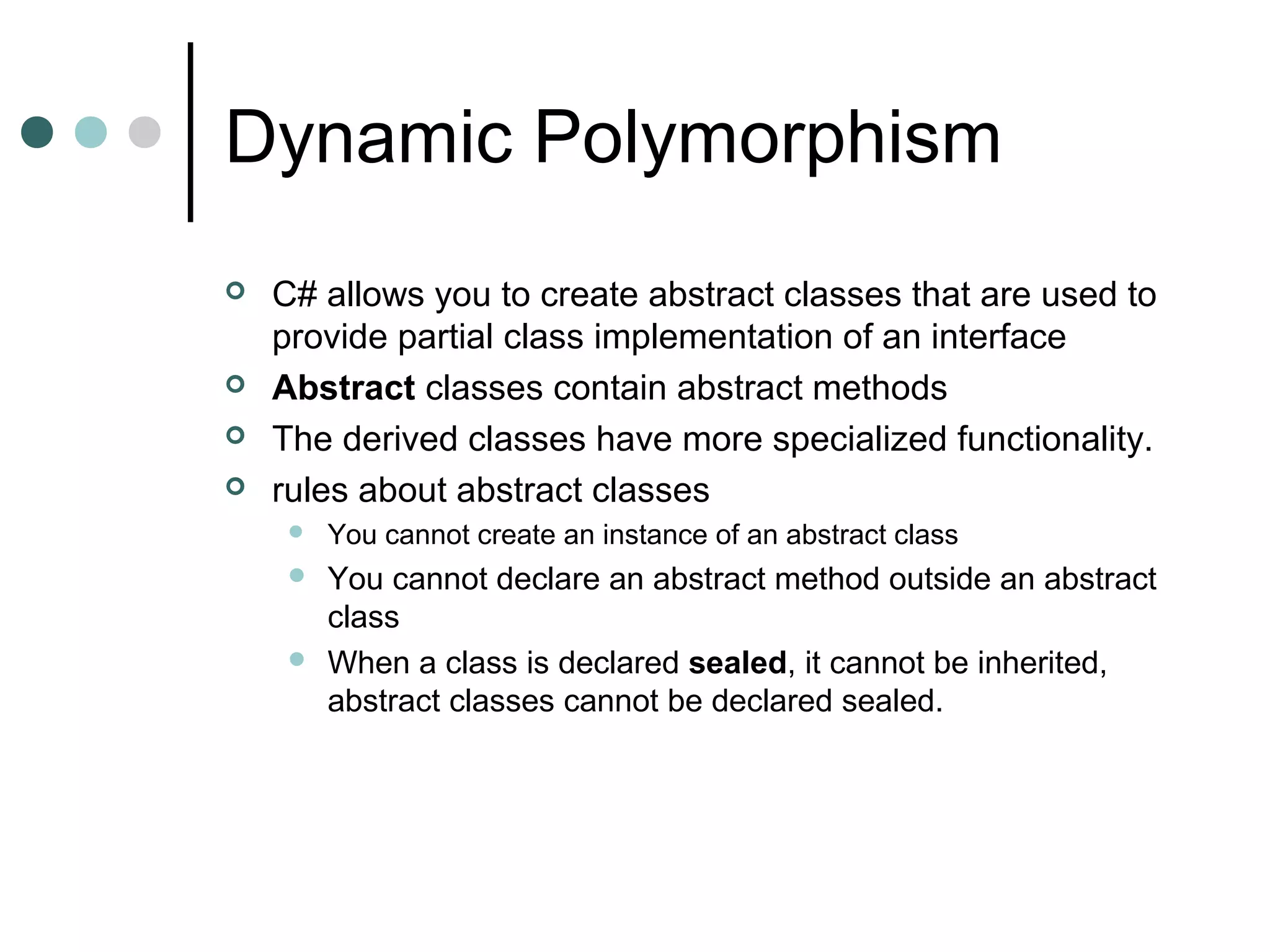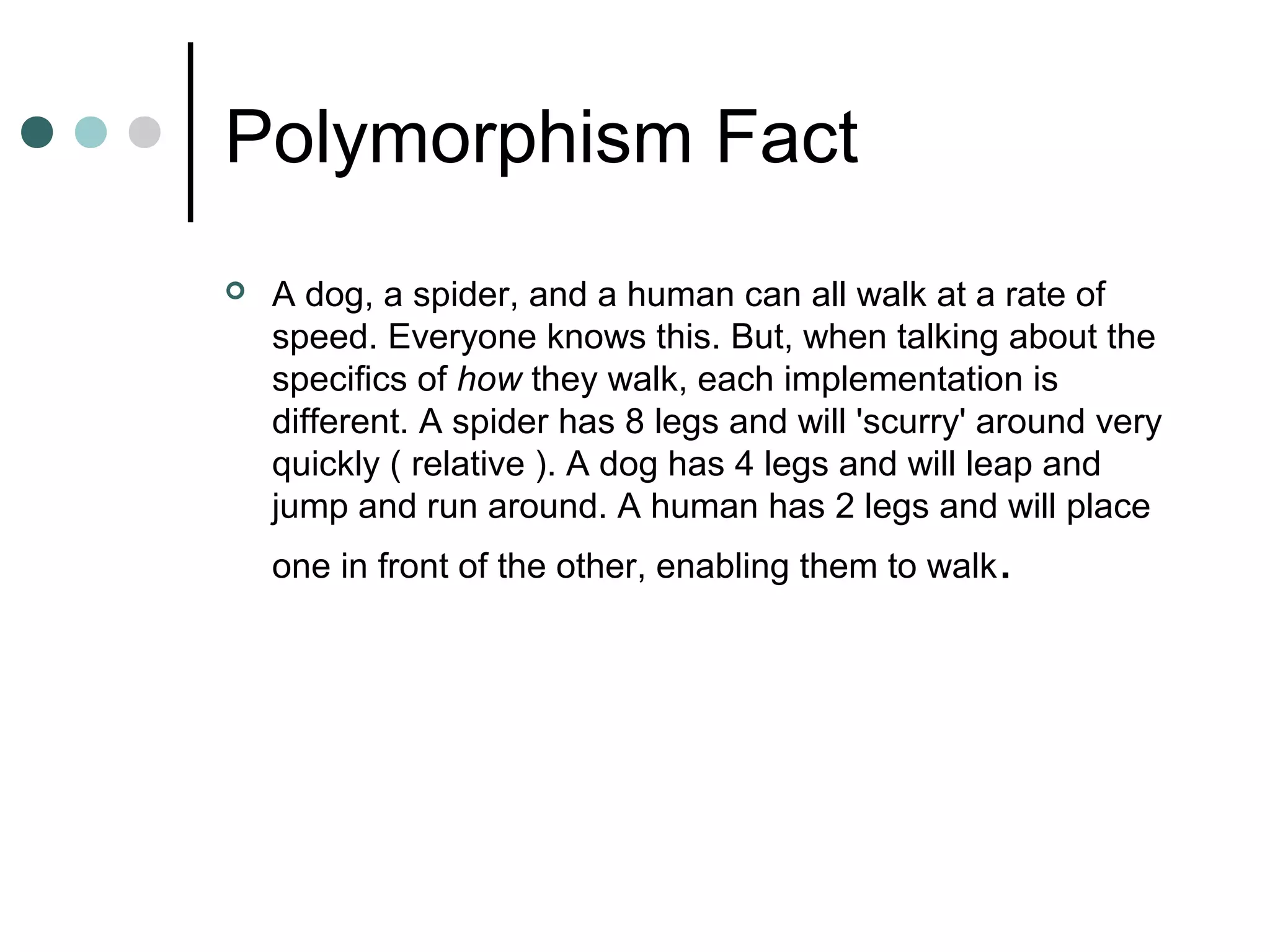The document introduces C# and the .NET Framework, covering key concepts like recursive methods, arrays, and inheritance. It explains polymorphism, detailing both static and dynamic types, along with function and operator overloading. Examples illustrate the uniqueness of implementations despite shared characteristics, such as different animals walking.



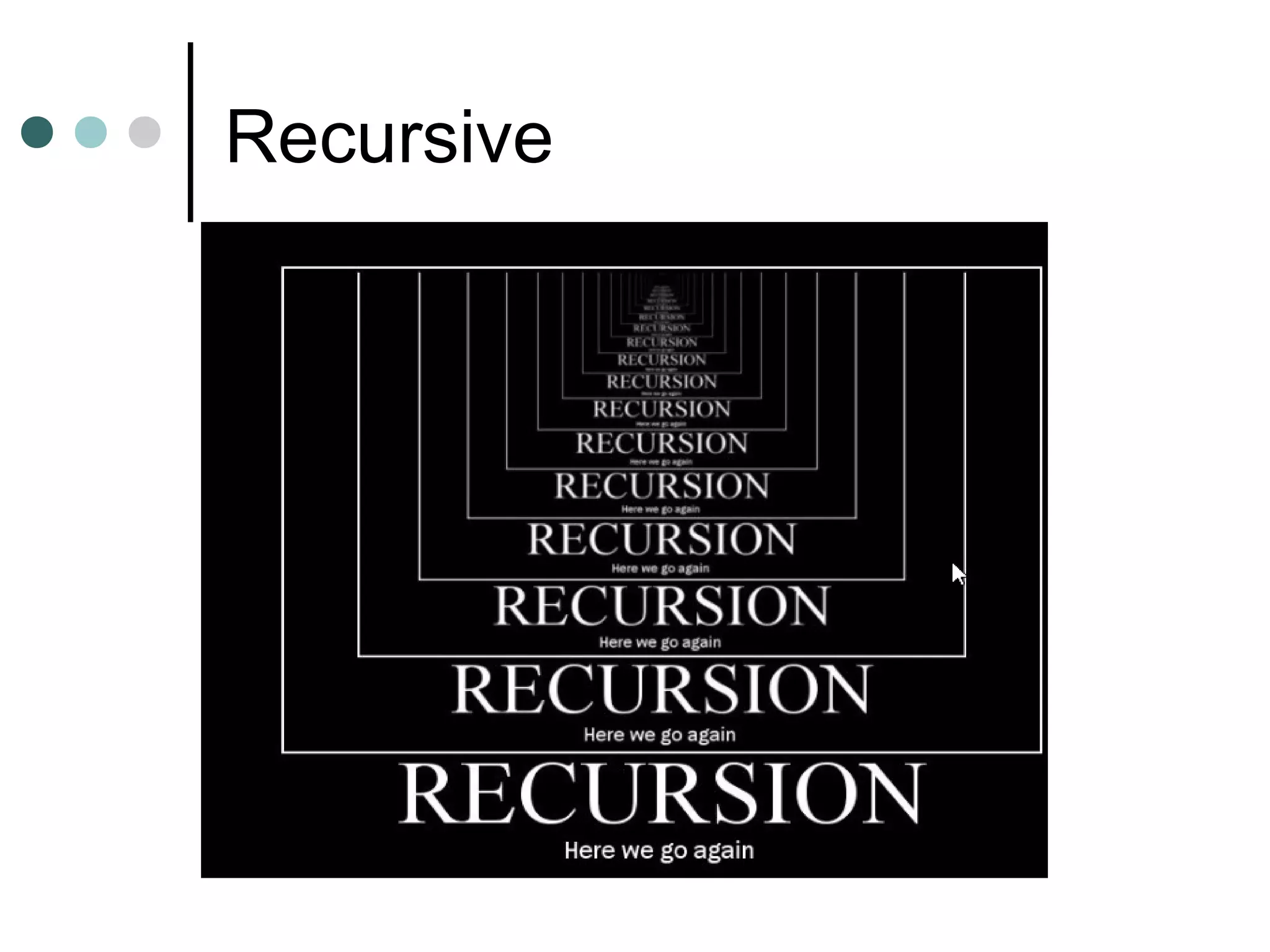
![Arrays
An array stores a fixed-size sequential collection of
elements of the same type.
Declaring Arrays
datatype[] arrayName;](https://image.slidesharecdn.com/lecture5-190729082830/75/An-Introduction-to-C-and-NET-Framework-Basic-5-2048.jpg)
